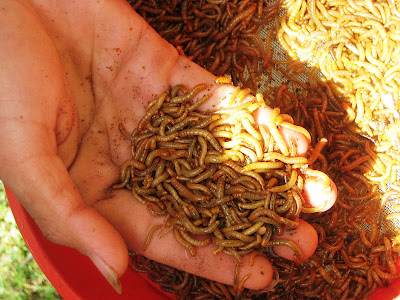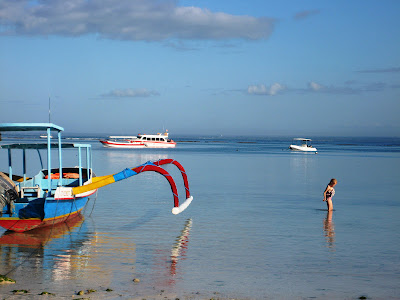FNPF stands for Friends of the National Park Foundation, a local Indonesian, non profit organisation, founded by veterinarians in 1997. We spent a week volunteering at the Bali Starling Rehabilitation Center on Nusa Penida. The Bali Starling or Leucopsar Rothchildi is on the verge of extinction in the wild - the main predator being humans.
Since 2006, FNPF have worked with the local community on this unique island to preserve Bali's sacred bird and their habitat. Around 100 000 saplings have been distributed to the largely barren island, with many more growing in the nursery.
This is where volunteers come in - usually the morning is spent potting plants for the nursery or arranging compost for the demonstration organic garden. Families are also welcome to volunteer with FNPF, and my little ones loved preparing the worms (below) to feed the birds awaiting release, each day.
The community are mostly seaweed farmers, and the local children come to the FNPF to use the bi-lingual library, learn dance, music, practice English and just to play. Sunset yoga on the beach (above) became quite a popular way to end the day - after a snorkel around the world famous Ped Point dive site and a laze on the beach. It's a tough life being a FNPF volunteer - not.

















































